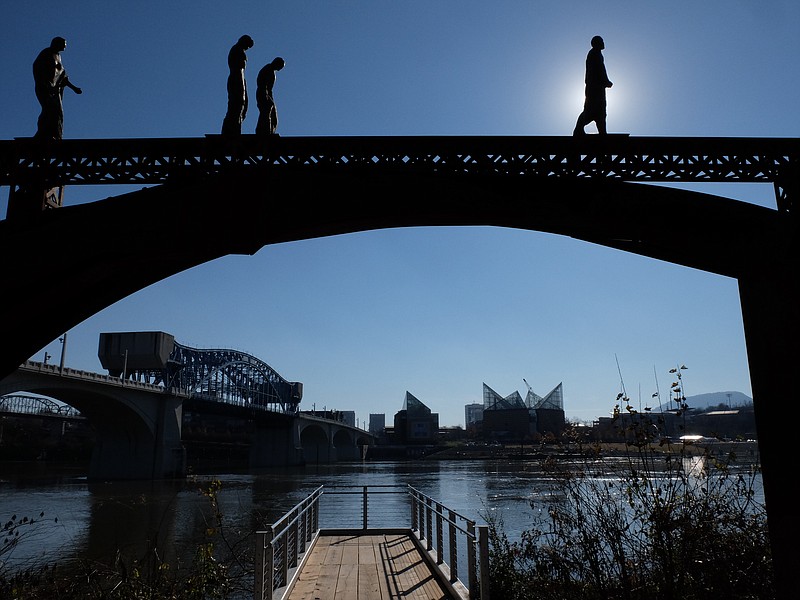The Chattanooga City Council will vote today whether it will enter into a stream bank erosion agreement with the United States Army Corps of Engineers.
The proposed study takes a look at how the city could stabilize about 1,000 feet of shoreline stretching from the Market Street Bridge down a waterway that intersects the Tennessee River at Renaissance Park's edge.
Last week, Chattanooga Public Works Administrator Justin Holland discussed the project with the city council, citing erosion concerns for one of the park's piers, a canoe launch near the Market Street Bridge and pump that feeds nearby wetlands.
"We've recognized we've lost quite a bit of actual land there, and it's now impacting some of the park features," Holland said, adding erosion has washed away several trees.
Chattanooga doesn't have to pay a dime for the first $100,000 spent on the study and will split the cost with the federal government until the project reaches its $300,000 cap. In the most expensive scenario, Chattanooga would pay $100,000 for the work. If the city proceeds with the study and implements recommended solutions, Chattanooga will cover 35 percent of the design and construction costs, while federal money will cover the rest of the expense, whatever that might be.
City Engineer Bill Payne told the council he did not expect the study would exceed $100,000.
The Department of Public Works outlined a number of other threatened city assets in an August letter to the Army Corps of Engineers, including public art installations, underground electrical lines, a concrete pathway, three picnic tables and grills and historical displays commemorating American Indian heritage and Civil War events.
The project has been on the city's radar for three years, Holland said.
Councilman Russell Gilbert asked if any of the city's lodging tax revenues could be used to pay for the project. Chattanooga uses the hotel/motel tax dollars to pay for projects outlined in its 21st Century Waterfront Plan, which dates back to 2005.
Holland said the money for the study would come from the city's general fund, which uses property tax revenue. However, the city could take a look at whether lodging dollars could be used, he said.
City Finance Officer Daisy Madison explained the city has to pay off debts for riverfront plan projects before more debt can be added.
"Generally speaking, we don't just routinely fund capital projects or operations projects from those dollars without doing a thorough analysis to make sure the specific bond pledge convent can be honored, as is required," Madison said.
Recent capital projects receiving lodging money - about $4 million - include repairs to the Holmberg Pedestrian Bridge and the Walnut Street Pedestrian Bridge, she said.
Contact staff writer Paul Leach at 423-757-6481 or pleach@times freepress.com. Follow him on Twitter @pleach_tfp.
